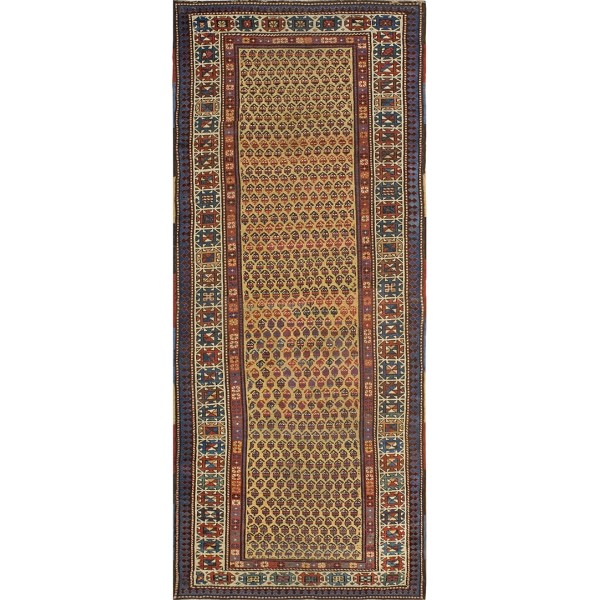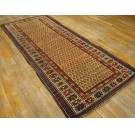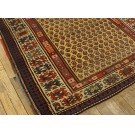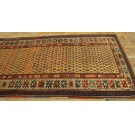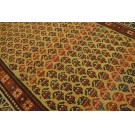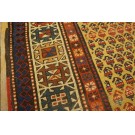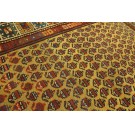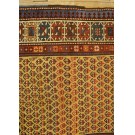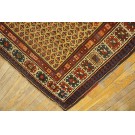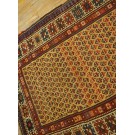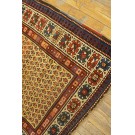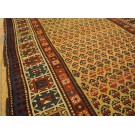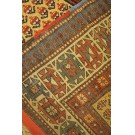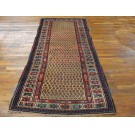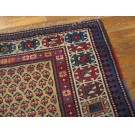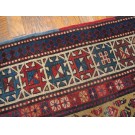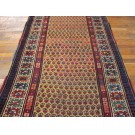19th Century S. Caucasian Moghan Carpet
| Stock ID: | #18411 |
| General Rug Type: | Caucasian |
| Specific Rug Type: | Caucasian - Moghan |
| Circa: | 1880 |
| Ground Color: | Yellow |
| Border Color: | Ivory |
| Origin: | Caucasus |
| Material: | Wool |
| Weave: | Pile - Knotted |
| Shape: | Rectangle |
| Width: | 3' 8" ( 112 cm ) |
| Length: | 9' ( 274 cm ) |
DescriptionCaucasianThis is the general heading for all rugs made in the Caucasus mountains and in the trans-Caucasus areas, north of the Arax River, and between the Black and Caspian Seas. This includes rugs from the Kazak, Karabagh, Gendje, Koghan, Talish, Akstafa, Shirvan, Baku, Kuba and hesghi districts and the variants and subtypes thereof. The rugs are usually in scatter sizes and of all wool construction, with bold colors and geometric patterns, from the 18th through 20th centuries. Prices range widely depending on rarity, color, design and condition. A strong collector market exists for the better examples. Caucasian - MoghanA relatively uncommon rug type woven in the Moghan steppe region just north of the Persian border in the eastern Caucasus. Usually of long rug format (4 x 8), the most common design is a double column of side-hooked, stepped crosses (memling guls), often on a light ground. Not every rug with this pattern is a Moghan and not every Moghan employs them. The weave is firm and neat, pile is short, color range (up to 12 tones) is exceptional. The pancity of good ones means that lesser pieces in the characteristic pattern one frequently passed off as something superior. | |
| Tearsheet Download | |
